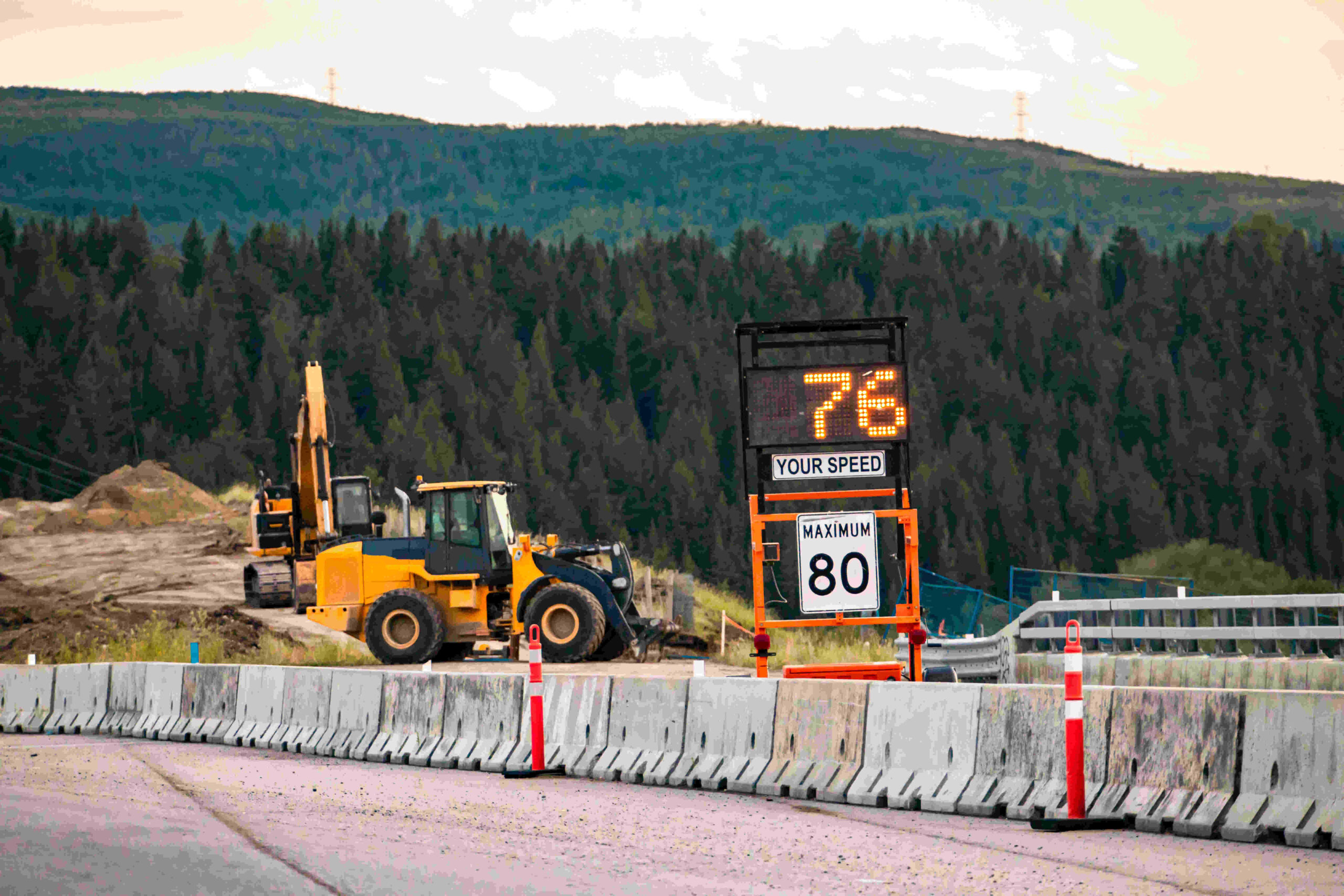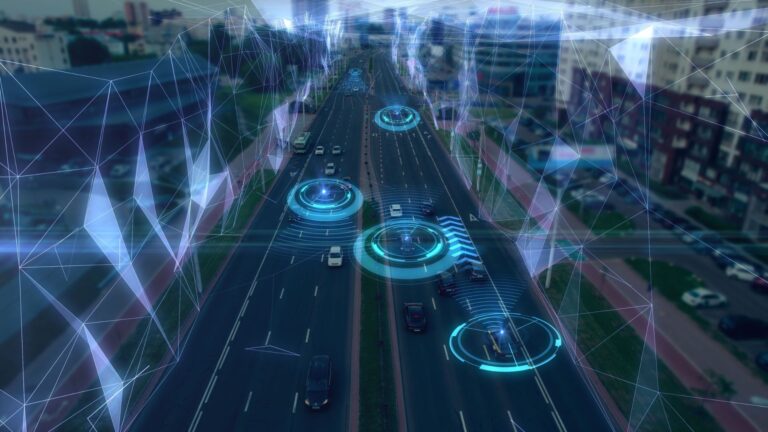Transportation departments around the globe need to ensure the safety for workers and drivers in work zones. Work zones are typically more risky environments where road conditions can change rapidly, and obeying speed limits is crucial to prevent accidents and ensure a smooth traffic flow. However, speed enforcement in these zones comes with unique challenges, especially given the need to balance efficient traffic management and worker safety. This is where automated work zone speed enforcement programs play a key role in ensuring work zone speed limits are being followed.
Why is Work Zone Speed Enforcement Important
Work zones are inherently dangerous areas due to the proximity of workers near driving cars, changing traffic patterns, and reduced visibility caused by construction equipment. According to the Federal Highway Administration (FHWA), more than 840 people died in work zone crashes in the United States in 2019, and speeding was a contributing factor in a significant portion of these incidents. Enforcement of speed limits within these zones is, therefore, essential not only for the safety of workers but also for drivers.
Data from the National Work Zone Safety Information Clearinghouse indicates that speed is a factor in about 30% of work zone crashes, underscoring the importance of consistent work zone speed enforcement. Drivers may not always adjust their behavior to the new conditions, especially when they are unfamiliar with the road changes in a work zone, and this is where enforcement becomes critical.
Traditional Enforcement Methods
Historically, enforcing speed limits in work zones relied heavily on traditional methods such as placing police officers at these locations to monitor and stop speeding vehicles. Although this method can be effective, it is labor-intensive, costly, and proposes more dangers, for both officers and road workers. Additionally, the presence of law enforcement might only have a temporary effect, as drivers tend to reduce their speed only when they are visibly aware of the police presence. Once the officers leave, many drivers resume their regular speed, instead of continuously adjusting their behaviour, making this a rather ineffective method.
Automated Work Zone Speed Enforcement: A Modern Solution
Automated Speed Enforcement (ASE) programs offer a far more reliable and efficient solution to maintaining compliance with work zone speed limits. ASE systems use cameras and radar as well as modern LIDAR technology to monitor vehicle speeds and capture images of vehicles exceeding the speed limit. These systems operate 24/7, providing continuous enforcement without requiring human intervention.
LIDAR (Light Detection and Ranging) technology is capable of monitoring vehicles’ speeds across multiple lanes. This is particularly important in work zones where traffic flow can be irregular, and there may be a mixture of slow-moving construction vehicles and regular traffic. The benefit of ASE systems is that they provide consistent enforcement, which has been shown to change driver behavior and reduce speeding over time.
Real-Time Data Processing and Violation Alerts
Automated enforcement systems are capable of processing real-time data to identify speeding vehicles. If a vehicle exceeds the work zone speed limit, the system captures an image or video of the violation, including details such as the vehicle’s speed, license plate, and the time and date of the offense. This information is then forwarded to the relevant authorities, who verify the violation and issue a citation.
This real-time capability significantly improves the efficiency of enforcement. For example, Maryland’s automated work zone speed enforcement program has seen great success, reducing speeding violations by over 80% in targeted work zones. Similar programs in states like Illinois and Virginia have also reported impressive results, with reductions in crashes and improvements in worker safety.
AI and Machine Learning in Automated Enforcement Systems
Automated speed enforcement systems increasingly leverage AI and machine learning to enhance their detection capabilities. By analyzing patterns in traffic behavior, these systems can improve the precision of speed monitoring and violation detection. Machine learning models allow ASE systems to adjust to varying road conditions, such as changing weather or traffic patterns, and improve their detection accuracy over time. AI-powered systems can also classify vehicles, distinguish between vehicle types, and recognize different lane patterns. For example, in work zones, it is common for large trucks to move slower than passenger vehicles, and these systems can adjust enforcement parameters accordingly. AI and ML technology can even predict potential violations before they happen, adding another layer of efficiency to enforcement in work zones.
This use of AI and machine learning not ensures that enforcement efforts are more accurate and adaptable to real-time conditions, they also reduce false positives and therefore cut administrative costs.
Benefits of Automated Work Zone Speed Enforcement at a Glance
1. Improved Safety for Workers and Drivers
Automated enforcement reduces the need for human officers in work zones, minimizing the risk for both law enforcement personnel and workers. ASE programs are more effective than traditional methods at deterring wrong behaviour, encouraging drivers to maintain appropriate speeds throughout the work zone rather than only when police are present.
2. Consistency and Accuracy
ASE systems provide consistent enforcement by operating 24/7. They also eliminate human error, ensuring that violations are captured accurately, even in complex traffic situations, and as a result, cut administrative effort and costs.
3. Reduction in Speeding Violations
Many studies have shown that ASE programs consequently reduce speeding violations in work zones. A program launched in Indiana for example aims to significantly improve work zone safety. In 2024, the state introduced a pilot program to use automated speed enforcement (ASE) systems in highway construction zones. Early data shows promising results, with expectations that the technology will substantially reduce crashes, injuries, and fatalities. According to state officials, before the program’s implementation, Indiana saw a rise in work zone incidents, with over 7,000 crashes and 1,426 injuries reported in 2022 alone.
4. Public Awareness
In addition to enforcing speed limits, automated systems also play a role in raising public awareness. By placing digital signs that alert drivers to their speed or the presence of enforcement cameras, these programs remind drivers to comply with speed limits, fostering a culture of road safety.
Regulatory Framework and Public Acceptance
Automated enforcement programs are governed by state and local regulations to ensure their transparency and fairness. Public acceptance has generally been positive, particularly when these programs are implemented with clear communication, a warning ahead when these enforcement programs go into effect, and appropriate signage in work zones. Data from a study conducted in Maryland showed that 76% of surveyed residents supported automated enforcement in work zones, recognizing the safety benefits it provides to both workers and drivers.
Enforcing speed limits in work zones is essential to ensure the safety of workers and drivers, and automated speed enforcement systems have proven to be the most effective tool in achieving this goal. By providing consistent, accurate, and real-time monitoring, these systems reduce the risk of accidents and create a safer environment for everyone. Automated work zone speed enforcement programs are on the rise, in Europe, Asia and across the United States, with continuously more states establishing the legal framework to allow for ATEs. Implementing these systems not only enhances safety but also supports a broader push towards smarter, more efficient transportation management.






